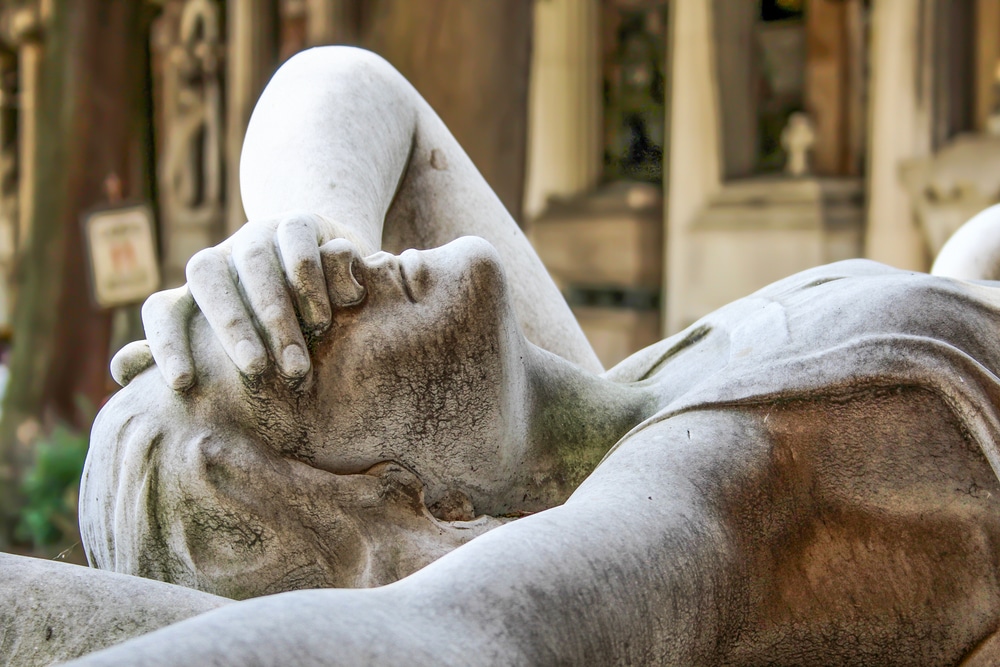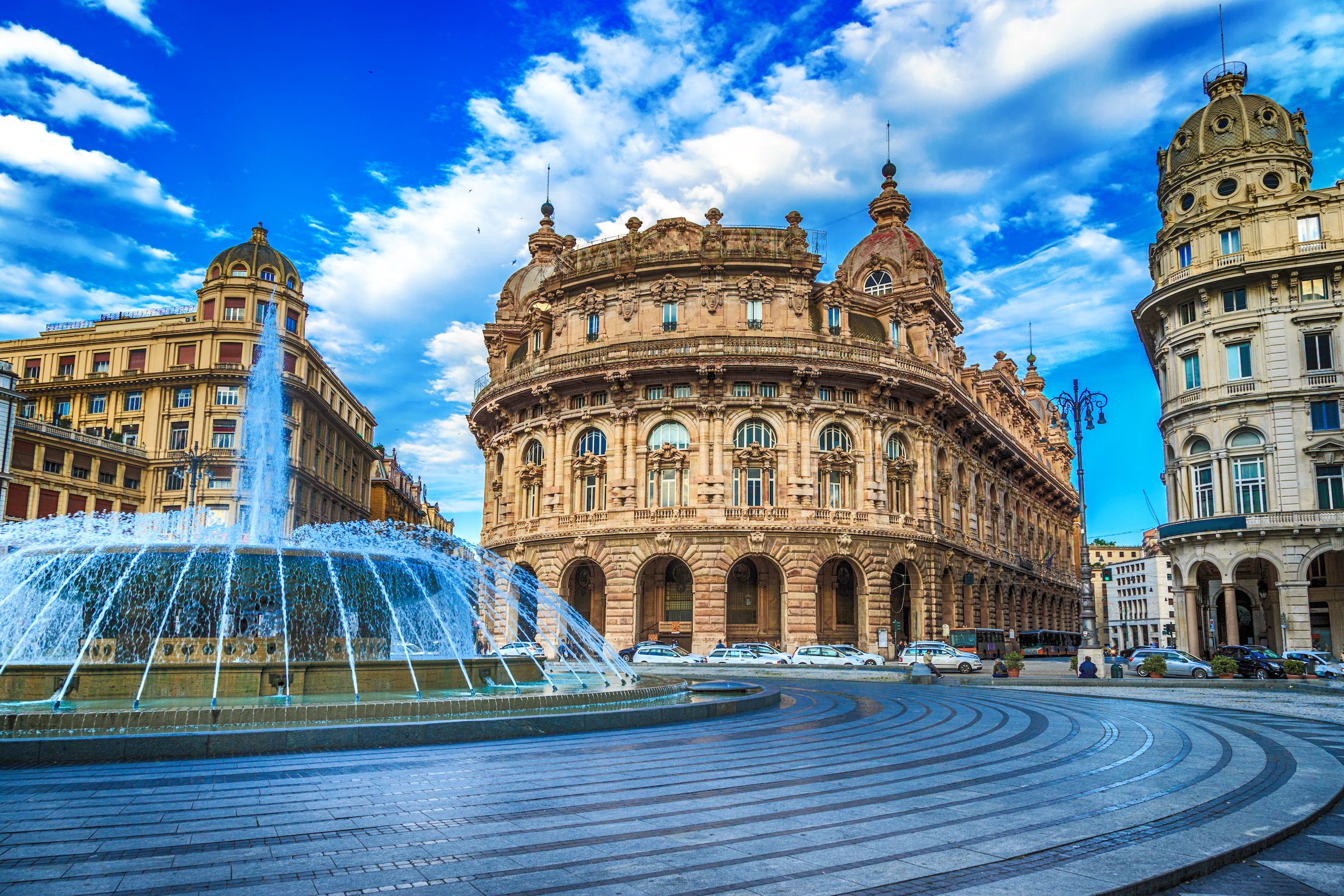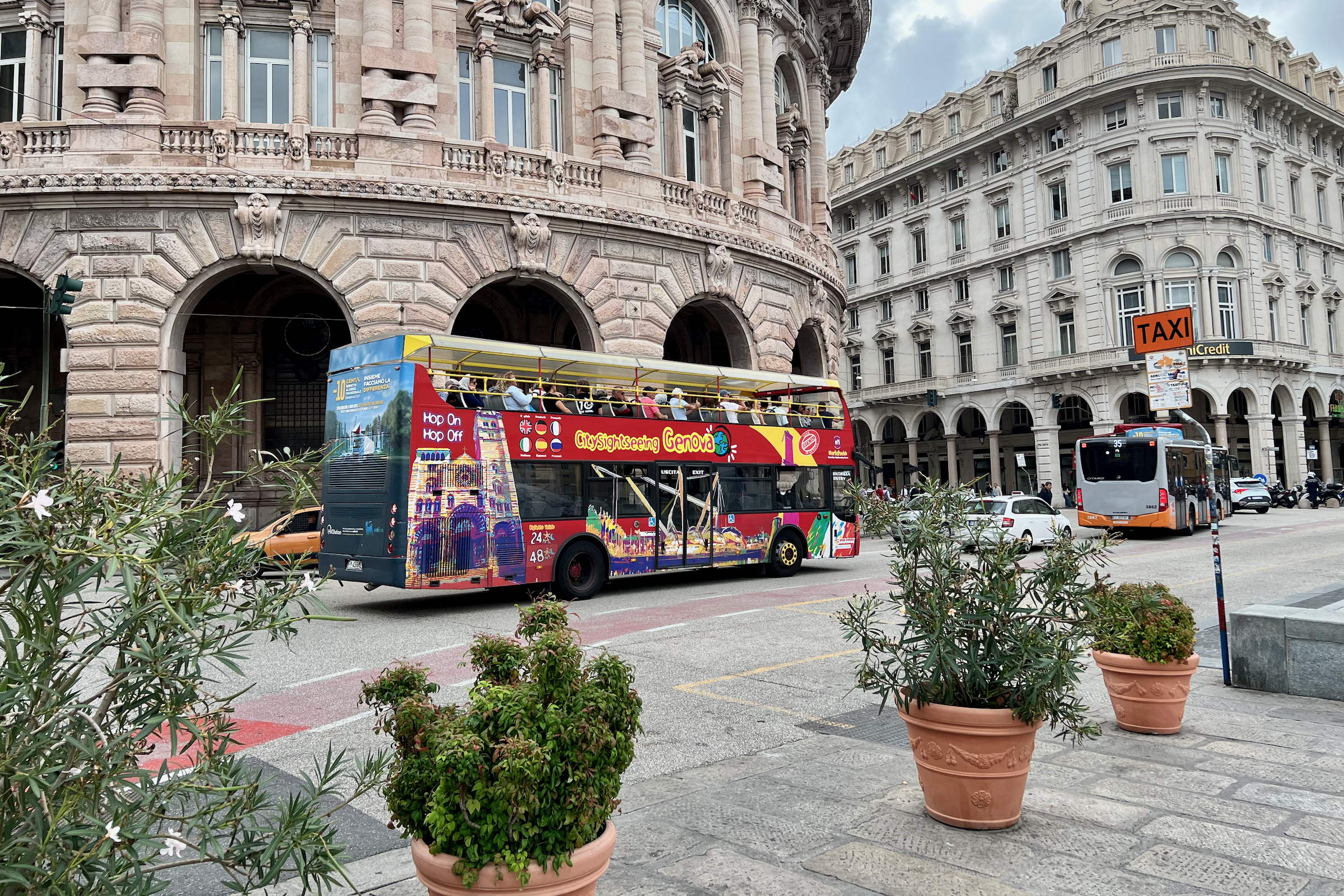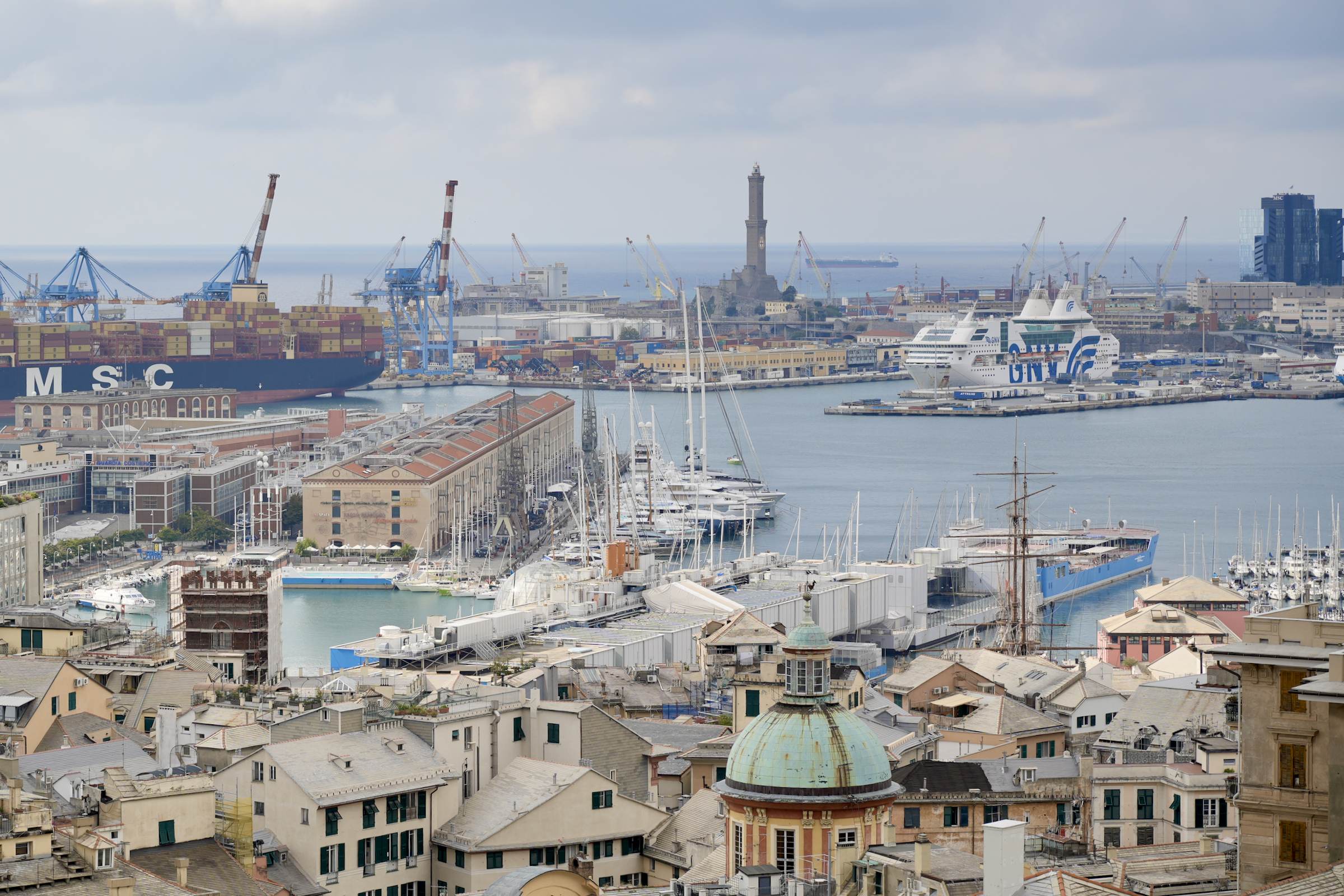Monumental Cemetery
The Cimitero monumentale is a monumental cemetery located in the Staglieno district of Genoa. It impresses with its architectural design, which is particularly characterized by arcades and colonnades, in which multi-storey urn niches are embedded. It is located on a very steep hillside, with imposing family crypts set into its flanks in a park-like setting.

The area of the Cimitero monumentale is about one square kilometer, which is very large for a cemetery. Because of this and the hillside location, there is a special minibus line that connects the individual cemetery districts with each other.
A dignified burial place
In the 19th century, the population of the Ligurian capital Genoa grew. This meant that more and more people were being buried, which made it difficult to bury them within the city limits. At that time, the cemeteries were mostly still located around the churches. The philosopher Michel Foucault speaks of the fact that in the 19th century a tabooing of death by society took place, which is why cemeteries were built outside the churches. This phenomenon can also be observed in Genoa in the example of the Cimitero Monumentale.
Thus, the Genoese city architect Carlo Barabino (1768-1835) was commissioned by the city to plan a modern cemetery to be located outside the city gates. For this purpose, the remote hillside near the district of Staglieno was chosen. Today the area is still outside the actual city district. Barabino conceived a vast area that was to resemble a "city of the dead". However, when it was officially opened on January 1, 1851, this vision was not yet complete. The Cimitero monumentale only became a "city of the dead" in the sense of a burial and consecration site based on the ancient model when it was decorated over the course of time. By the standards of 1851, however, it was a cemetery with the most modern facilities, meeting all hygienic requirements. In 1890 and 1955 the cemetery was extensively renovated and partly extended. The original Roman Catholic cemetery was extended to include areas where Protestant and Anglican Christians are buried.
Architecture and art of the "City of the Dead
The architectural centre is the Pantheon, which can be admired from the main entrance. Like almost all the colonnades and arcades, it was built by Giovanni Battista Resasco (1798-1871), who was a close collaborator of the city's architect Barabino. The Pantheon is located on a hill and thus towers above the grounds. It blends harmoniously into the rural surroundings, which are dominated by mountain slopes and lush greenery. But what really elevates the cemetery to monumental are the many impressive sculptures that adorn the tombs in the arcades and around the mausoleums. These are particularly ornate in design, illustrating the great wealth of those buried here. Stylistically, most of the works of art are inspired by 19th century Bourgeois Realism. However, many other styles are also represented, elevating the cemetery to a prime example of art history. Classicism and Art Nouveau can be found as well as Baroque and Symbolism. All gravestones have in common the high quality material they are made of. Most of them are made of the high-class Carrara marble. Characteristic for the Genoese monumental cemetery, however, is a special feature. Often the white marble was blackened in parts with the help of black floor polish.
Last resting place of the rich and famous
For all these reasons, an urn grave or even a family crypt is reserved for wealthy people. It is therefore not surprising that among the most prominent people buried in Staglieno are the author Giovan Battista Carpi and the wife of the writer Oscar Wilde, Mary Constance Wilde. The cemetery is also home to some whimsical or daring gravestones. For example, the industrialist Armando Raggio had an almost 30-metre-high copy of Milan's cathedral built on his final resting place.




